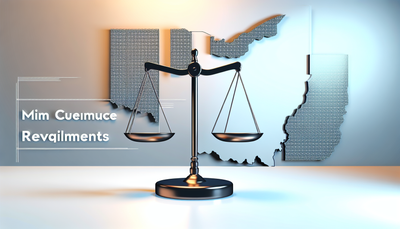What Does Full Coverage Really Mean? A Guide for Ohio Drivers

What Does Full Coverage Really Mean? A Guide for Ohio Drivers
When it comes to car insurance, the term “full coverage” gets thrown around a lot—but what does it actually mean, especially for Ohio drivers? Whether you're buying your first car or just reviewing your current policy, understanding full coverage is essential for protecting yourself and your vehicle on the road.
In this guide, we'll break down what full coverage typically includes, what Ohio law requires, and how to determine the best insurance strategy for your needs.
Understanding “Full Coverage” Car Insurance
Let’s start with a simple truth: there is no single, universal definition of full coverage. Instead, it’s a combination of several types of insurance that, together, offer broader protection than the minimum state requirements.
A typical full coverage policy includes:
1. Liability Insurance
This is required by law in Ohio and covers damages or injuries you cause to other people or their property in an accident.
- Bodily Injury Liability: Covers medical expenses for others.
- Property Damage Liability: Covers damage to someone else’s car or property.
2. Collision Coverage
Pays for damage to your car if you hit another vehicle or object, regardless of who’s at fault.
3. Comprehensive Coverage
Covers non-collision incidents such as:
- Theft
- Vandalism
- Natural disasters
- Animal collisions
Together, collision and comprehensive are what most people think of as the “extra” protections beyond liability.
What Are Ohio’s Minimum Insurance Requirements?
Ohio is an at-fault state, meaning the driver responsible for an accident is also responsible for the damages. The state requires drivers to carry at least:
- $25,000 for bodily injury per person
- $50,000 for bodily injury per accident
- $25,000 for property damage per accident
This is often referred to as 25/50/25 coverage. While this meets legal standards, it may not be enough to cover all expenses in a serious accident.
Why Ohio Drivers Might Want Full Coverage
Even though full coverage isn’t legally required in Ohio, there are several reasons why drivers might want it:
1. Financing or Leasing a Vehicle
Lenders usually require full coverage to protect their investment. If your car is leased or financed, you’ll likely need it.
2. Protecting Your Investment
If you own a newer or high-value vehicle, the cost to repair or replace it out-of-pocket after an accident can be significant. Full coverage gives you peace of mind.
3. Weather-Related Risks
Ohio’s winters can be brutal. Ice, snow, and road salt increase the risk of accidents and damage. Comprehensive coverage can save you from costly repairs due to storm-related damage.
How Much Does Full Coverage Cost in Ohio?
The average cost of full coverage car insurance in Ohio is lower than the national average—typically around $1,000 to $1,200 per year. Rates depend on factors such as:
- Age and driving history
- Type of vehicle
- Location within the state
- Credit score
Shopping around and comparing quotes can help you find affordable full coverage.
Is Full Coverage Right for You?
Full coverage offers valuable protection, but it isn’t always necessary. Here’s how to decide:
- If your car is worth less than $4,000, you may be paying more for coverage than you’d get in a claim.
- If you live in an area prone to theft or extreme weather, comprehensive coverage could be a smart move.
- If you rely heavily on your vehicle, investing in full coverage ensures quicker recovery after an accident.
Ultimately, it comes down to balancing risk, value, and budget.
Final Thoughts
“Full coverage” isn’t one-size-fits-all, but for Ohio drivers, it can offer critical financial protection, especially when paired with the state’s basic requirements. Understanding your options—and your own needs—is the key to building the right policy.
Before you renew or buy your next policy, take the time to evaluate your vehicle’s value, your driving habits, and your risk tolerance. It might just save you thousands down the road.
Stay safe out there, Buckeye drivers!
Need help finding the right car insurance in Ohio? Talk to a licensed agent or use online comparison tools to get quotes tailored to your needs.







